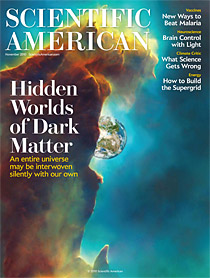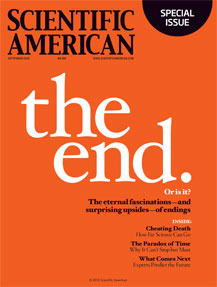From birth to college, the number of days as a parent doesn’t begin to capture empty nest syndrome
When I matriculated at Pepperdine University in 1974 and moved to the Malibu campus from my home in La Canada, my mother exercised her parental right to express her angst at my departure from the nest, now empty.
I responded with typical teenage indifference and bafflement born of ignorance. “Sheez, Mom, I’m only an hour away. What’s the big deal?”
“You just wait until you have one of your own,” she cried. “Then you’ll know what I’m feeling.”
Last month I found out when my daughter moved into her dorm at college and life as I know it has come to an end. Or so at least that’s what it feels like. I find myself waking up at four in the morning, reaching for some distracting literature and finding light comfort in Anthony Bourdain’s Kitchen Confidential. I entertain a fantasy of riding my bike to Mount Wilson and hurling myself off the cliff fully clipped into my pedals, sans helmet. I turn to the Internet for advice and find this on netdoctor.co.uk (“empty-nest syndrome”): “you could have a long lie in a scented bath. You may even come to see that although you’ve lost a teenager, you’ve gained a bathroom!” Oh, great, I’ve got a woman’s disorder. I flip back to Bourdain and learn never to order fish on Mondays (weekend leftovers).
The nest’s empty loneliness is almost unbearable. Why does it hurt so bad? Science has an answer: we are social mammals who experience deep attachment to our fellow friends and family, an evolutionary throwback to our Paleolithic hunter-gatherer days of living in small bands of a couple of dozen to a couple of hundred people who were either related to one another or knew one another intimately. Bonding unified the group, aiding survival in harsh climes and against unforgiving enemies, and attachment between parent and offspring assured that there is no one better equipped to look after the future survival of your genes than yourself. We are a pair-bonded species, practicing monogamy (or at least serial monogamy) long enough to get our children out of childhood.
How long is that? In the modern world it’s a long time. In my case, from birth to college was 6,895 days, or just a shade under 18.9 years. (For you numerophiles, that’s 165,480 hours, or 9,928,800 minutes, or 595,728,000 seconds). The quantitative figures do not begin to capture the qualitative feeling of bonding that happens between a parent and a child from the sheer amount of time spent together. Think about what those numbers mean. Every day for 6,895 days, when you get up and around in the morning your primary duty in life is to assure your child’s care and safety. An unbroken chain, suddenly cut.
We parents can’t help feeling this way and neuroscience explains why: there are a number of addictive chemicals such as dopamine and oxytocin that surge through the brain and body during positive social interactions (especially touch) that causes us to feel closer to one another. As my colleague at Claremont Graduate University Paul Zak has demonstrated in his lab, between strangers oxytocin creates a feeling of friendship. Between couples it leads to attraction and love. Between parents and offspring it cements a bond so solid that it is broken only under the most unusual (and usually pathological) circumstances. Mothers of serial killers have been known to weep in court and plead for leniency, even in the presence of the mothers of the murdered victims.
The empty-nest syndrome is real, but there is good news for this and all forms of loss and grief. According to the Harvard psychologist Daniel Gilbert, we are not very good at forecasting our unhappiness. In a comprehensive study involving six different experiments, Gilbert and his colleagues asked subjects to imagine how they would feel in a number of different scenarios that one could reasonably expect would trigger negative emotions, including the breakup of a romantic relationship, the failure to earn tenure, a defeat in a political election, negative feedback on one’s personality, the death of a child, and a job rejection by a prospective employer. Most of us think that we would be miserable for a very long time. Gilbert calls this the durability bias, an emotional misunderstanding. “Common events typically influence people’s subjective well-being for little more than a few months, and even uncommon events—such as losing a child in a car accident, being diagnosed with cancer, becoming paralyzed, or being sent to a concentration camp—seem to have less impact on long-term happiness than one might naively expect.”
In such situations we seem to experience immune neglect, says Gilbert, where we neglect to consider the strength of our psychological immune systems to protect us against the pain of insult, defeat, regret, and loss. In his experiments, for example, Gilbert and his colleagues found that “students, professors, voters, newspaper readers, test takers, and job seekers overestimated the duration of their affective reactions to romantic disappointments, career difficulties, political defeats, distressing news, clinical devaluations, and personal rejections.”
The durability bias and the failure to recognize the power of our emotional immune systems leads us to overestimate how dejected we will feel and for how long, and to underestimate how quickly we will snap out of it and feel better.
For me, taking the long view helps. How long? Deep time. Evolutionary time, in which 6,895 days represents a mere .000000005 percent of the 3.5 billion-year history of life on earth. Each of us parents makes one small contribution to the evolutionary imperative of life’s continuity from one generation to the next without a single gap, an unbroken link over the eons, glorious in its contiguity and spiritual in its contemplation.
And always remember, there’s no place like home…



